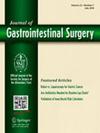Efficacy evaluation of postoperative adjuvant transarterial chemoembolization in preventing hepatocellular carcinoma recurrence within the Milan criteria: A multicenter propensity score matching analysis based on pathologic indicators
IF 2.2
3区 医学
Q3 GASTROENTEROLOGY & HEPATOLOGY
引用次数: 0
Abstract
Background
Malignant biologic behaviors, such as microvascular invasion (MVI), satellite nodule formation, and poor differentiation, can appear in the postoperative pathology of early hepatocellular carcinoma (HCC), which often indicates an earlier stage of malignant evolution. This study aimed to evaluate tumor recurrence in patients with HCC meeting the Milan criteria who underwent postoperative adjuvant transarterial chemoembolization (PA-TACE) according to postoperative pathologic indices.
Methods
A retrospective study was conducted on 790 patients with HCC meeting the Milan criteria who underwent hepatectomy across 4 medical centers, consisting of 366 patients treated with PA-TACE and 424 patients treated without PA-TACE. To reduce selection bias, propensity score matching (PSM) at a 1:1 ratio was applied, achieving balanced clinical characteristics between the 2 groups.
Results
Patients who underwent PA-TACE did not experience severe adverse events or toxicity-related deaths. After PSM of each subgroup, it was found that patients with MVI (median time: 37 vs 17 months; P =.010), satellite nodules (median time: Not Applicable [NA] vs 14 months; P =.018), and Edmondson-Steiner grades III and IV (median time: NA vs 13 months; P =.004) who received PA-TACE had higher recurrence-free survival (RFS). However, patients who were MVI negative, satellite nodule negative, and Edmondson-Steiner grades I and II did not benefit from PA-TACE in terms of RFS (all P >.05). Patients who received PA-TACE were more likely to undergo liver transplantation, rehepatectomy, or local ablation after tumor recurrence, whereas those who did not receive PA-TACE were more likely to receive TACE, chemoradiotherapy, or immune-targeted therapy after tumor recurrence (all P <.05).
Conclusion
Postoperative pathologic indicators can guide the selection of PA-TACE for patients with HCC meeting the Milan criteria. Patients with MVI, satellite nodules, and Edmondson-Steiner grades III and IV are more suitable for receiving PA-TACE to improve RFS. PA-TACE may alter the recurrence pattern of tumors, rendering them more localized.
米兰标准下术后辅助TACE预防HCC复发的疗效评价:基于病理指标的多中心倾向评分匹配分析
目的:早期肝细胞癌(HCC)术后病理可出现微血管侵袭(MVI)、卫星结节形成、分化差等恶性生物学行为,往往预示其较早进入恶性演变阶段。本研究旨在评估符合米兰标准的HCC患者术后辅助经动脉化疗栓塞(PA-TACE)后的肿瘤复发率,基于术后病理指标。方法:对四个医疗中心接受肝切除术的790例符合米兰标准的HCC患者进行回顾性研究,其中366例接受PA-TACE治疗,424例未接受PA-TACE治疗。为了减少选择偏倚,采用1:1比例的倾向评分匹配(PSM),实现两组临床特征的平衡。结果:接受PA-TACE治疗的患者没有出现更严重的不良事件或毒性相关死亡。各亚组PSM后,发现接受PA-TACE治疗的MVI(中位时间:37个月vs 17个月,p = 0.010)、卫星结节(中位时间:NA vs 14个月,p = 0.018)和edmonson - steiner III-IV级(中位时间:NA vs 13个月,p = 0.004)患者无复发生存(RFS)更高。然而,mvi阴性、卫星结节阴性和edmonson - steiner I-II级患者在RFS方面没有受益于PA-TACE(均p < 0.05)。接受PA-TACE治疗的患者在肿瘤复发后更容易接受肝移植、再肝切除术和局部消融,而未接受PA-TACE治疗的患者在肿瘤复发后更容易接受TACE、放化疗和免疫靶向治疗(均p < 0.05)。结论:术后病理指标可指导肝细胞癌患者在米兰标准范围内选择PA-TACE。MVI、卫星结节和edmonson - steiner III-IV级患者更适合接受PA-TACE以改善RFS。PA-TACE可能改变肿瘤的复发模式,使其更局限。
本文章由计算机程序翻译,如有差异,请以英文原文为准。
求助全文
约1分钟内获得全文
求助全文
来源期刊
CiteScore
5.50
自引率
3.10%
发文量
319
审稿时长
2 months
期刊介绍:
The Journal of Gastrointestinal Surgery is a scholarly, peer-reviewed journal that updates the surgeon on the latest developments in gastrointestinal surgery. The journal includes original articles on surgery of the digestive tract; gastrointestinal images; "How I Do It" articles, subject reviews, book reports, editorial columns, the SSAT Presidential Address, articles by a guest orator, symposia, letters, results of conferences and more. This is the official publication of the Society for Surgery of the Alimentary Tract. The journal functions as an outstanding forum for continuing education in surgery and diseases of the gastrointestinal tract.

 求助内容:
求助内容: 应助结果提醒方式:
应助结果提醒方式:


